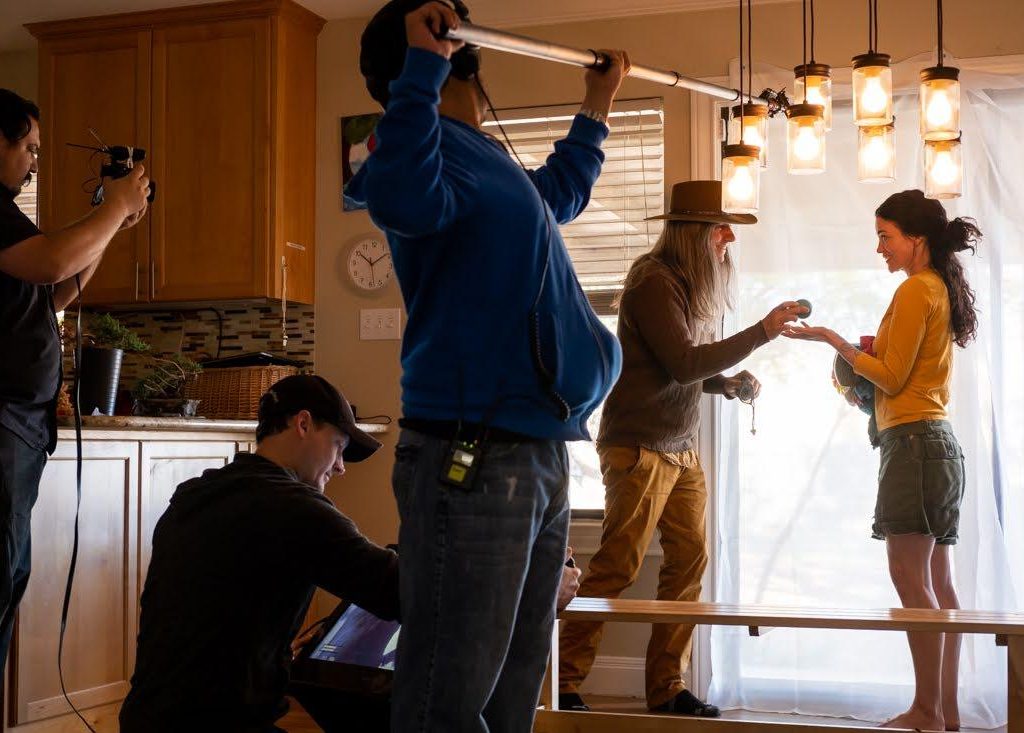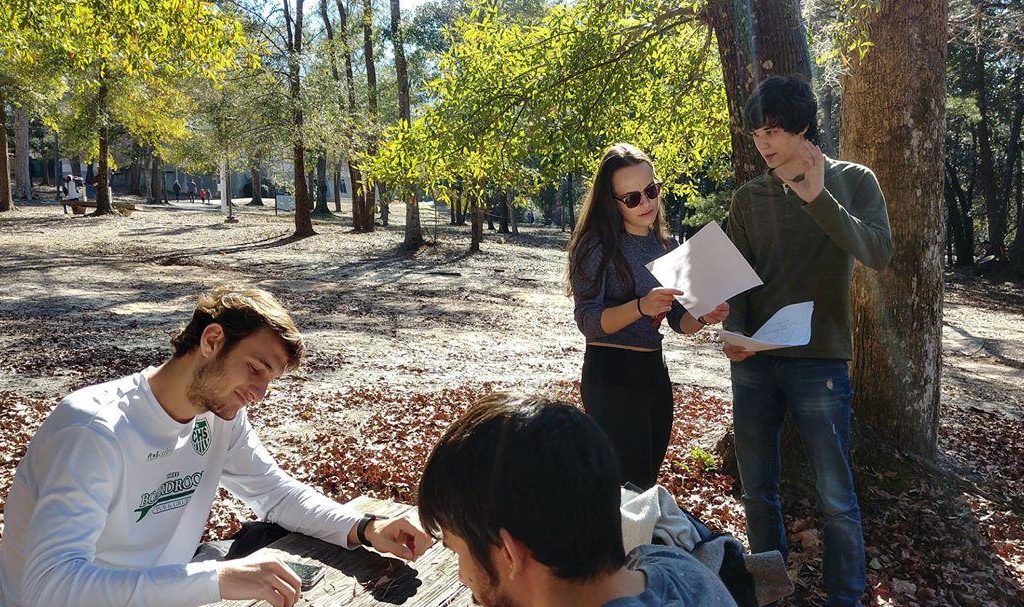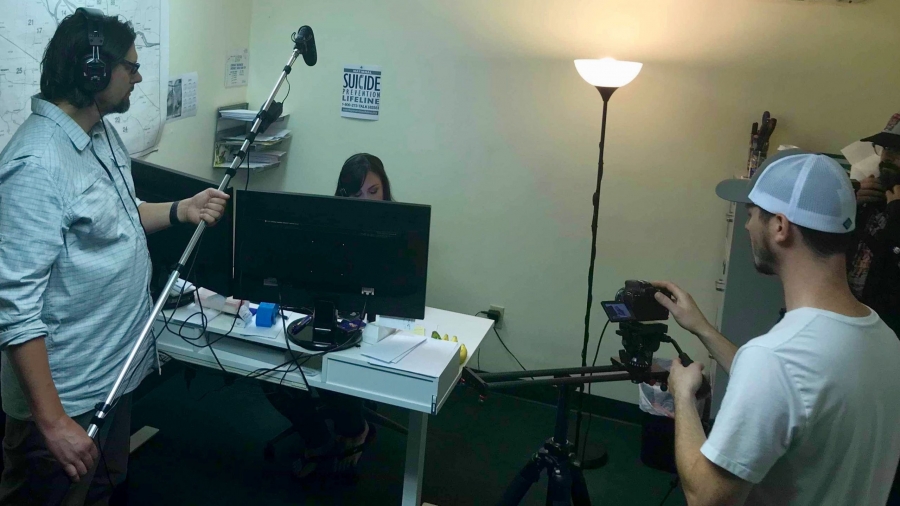Written by William Powell
In a previous Film Fest Magazine article, (“How to Make a Film in 48 Hours”), we pointed out the challenges faced by writing, filming, and, editing a film within 48 hours as part of the nearly 20-year-old 48 Hour Film Project, Inc.
In an often sleepless weekend, teams write, shoot, and edit a four to seven-minute film in 48 hours—typically starting on a Friday night and ending on a Sunday night. During the kick-off night, teams draw a genre from a hat. The producers give teams a character, prop, and line of dialog to include in their films. Approximately a week after submission night, the films are screened at a local theater.
Unfortunately, because of the COVID-19 crisis, the 48 Hour Film Project has switched this year to a series of film-at-home-submit-online challenges, under the name Stuck at Home 48 Hour Film Project. Filmmakers who participated in the project had to stretch the bounds of their creativity to make films that had to be done in their homes—with actors sending in their footage remotely.
Despite those challenges, many of the filmmakers said they had no trouble getting and staying motivated for the project. Ingenuity has been the key for these creatives, as they have created a vast variety of films, from many different genres. A recent challenge called for a film featuring a prequel or sequel to a myth, legend, or a fairy, folk, or tall tale. Film Fest Magazine interviewed many of the filmmakers who participated in the Stuck at Home 48, and the founder and Executive Producer of the 48 Hour Film Project, Mark Ruppert.

Justin R. Durban on the set of CRICK
“We recognized that our filmmakers needed a creative outlet—and we also realized that the coronavirus was adding uncertainty to everyone’s lives,” Ruppert said of the decision to not to cancel the competition altogether.
“We came up with the Stuck At Home 48 as a free online challenge as a way for current 48ers to flex their creative muscles and also as a way to introduce the 48 to new filmmakers.”
Ruppert said it was more challenging to organize an online challenge, “because we have filmmakers around the world who are competing—and we often have a different assignment in each time zone—it requires more planning ahead.”
Ruppert said the regular 48 Hour Film Project will return to some cities as early as July, and he offered some encouraging words for filmmakers during these challenging times: “Keep doing what you’re supposed to be doing. You are a creative. You are a filmmaker. These challenging times present us with opportunities—new ways to explore and create. Keep on making movies!”
“We did a film entirely on Zoom,” said Andrea Hays, who served as Team Leader for AKA Tante’. “I wrote and directed it so we just rehearsed on Zoom—it was like live theater because we had to get it all done all the way through—no mistakes no dropped lines no ‘I’ll be in my trailer’ temper tantrums (well—that actually doesn’t happen in our group).
“We had only a few rules—we had to use at least ONE CFX mask, [a company that makes silicone masks] they were sponsoring the challenge; it had to be able to be shown on Facebook so no nudity.”
Hays has worked on several films, such as Flash Frame, Lily, and Miss Final Girl, that have been featured on the festival circuit, Amazon Prime, and Netflix. Find Hay’s work online: Conference Call.
Michael Scott of the team Forty Ninth Hour Films, found the humor in directing actors remotely. “Probably the most creative [process] was having one of my actors play his character only on a smartphone screen. I had him looking left and right as if someone was standing next to him, so when both the actors were looking forward in the shot, they still interacted with each other, which was funny to watch.”
“We lost a team member in the first challenge because they found working with remote direction was too hard,” said Danute (Danny) Dorion, who led SteamWorld Entertainment Films. “That was the biggest challenge. Some people are great with minimal instruction. Others need that one-on-one face time.”

Freja Hansen directing at rehearsals for her short film TIMES CHANGE
Team Leader Maura Knowles found the silver lining in the restrictions of the competition. “Oddly enough, I found the restrictions liberating. The parameters were set, and I love a good challenge. It sparked me.”
Knowles’ team was just two people. “I directed myself and my roommate who acted as the D.P. (Director of Photography). She also edited it.”
Julie Cohn of Team Julie was able to overcome procrastination to make several films at home. “I’ve made three films with the Stuck at Home 48 now: Croc & Jaws, 20 Years, and Goldi-un-lock-ed. A few times, I’ve felt unsure about how to even begin, and that made it hard to sustain my enthusiasm, especially Friday night after a long day of work, but by each Saturday afternoon the ideas have been throwing themselves at me to the point where I’ve had no choice but to make these films.”
“What was really cool with this particular project was that I was filming in Vancouver as that’s where I am isolating with family,” said Gillian Clare who produced the film Coda, with her team Dionysia Ltd. “The rest of the team were in Toronto. What I ended up doing was sending pictures of the screen to the others, since they could see the frame without having to send an entire take.”
Some teams alluded to folklore in their works. James Dowd’s team, DM5K Productions, created NJ Devil, about an imaginary creature that lives in the Pine Barrens section of southern New Jersey.
“I was super excited,” said Dowd. “As a creative person it was great to have a venue to produce something, [but] it certainly was challenging being limited by location and crew. I was my own crew.”
Spencer Shaw was “a one-man team” and leader of his Jeepless In Seattle team. “None of my family members have an interest in filmmaking, so I had to do it all myself; although I was able to get my brother to help me for a few shots. The film was a modern take on the legend of the Grim Reaper, called The Grim Reaper gets Covid19.”
“Without teammates, I started to go crazy in my own head. I guess I crave constant feedback from teammates to make sure that I’m on the right track. By the editing stage, all I could think was ‘this is so stupid. Everything I’ve done here is wrong.’”
Producer and actor Lowrie Fawley of Rogue Chimera Films, LLC, said that she and her crew were in a state of readiness before the competition was announced. “We were already trying to think of ways to keep relevant and to be an active part of the filmmaking community, so the 48 just gave us a chance to focus on a specific project.”
Fawley spoke of overcoming geographic differences. “We had actors in two states and one in Japan all filming their own scenes.”
“The challenges came in gathering the footage we needed, getting it to the editor in a file type that was compatible, and the reality of dealing with different cameras (including phone cameras) not matching up.”
Fawley’s company is active on the festival circuit; you can find its work here: www.roguechimerafilms.com
The 48 Hour Film Project is an excellent stepping stone for filmmakers. Find out the latest news about it here: http://48hourfilm.com/en/news-articles

